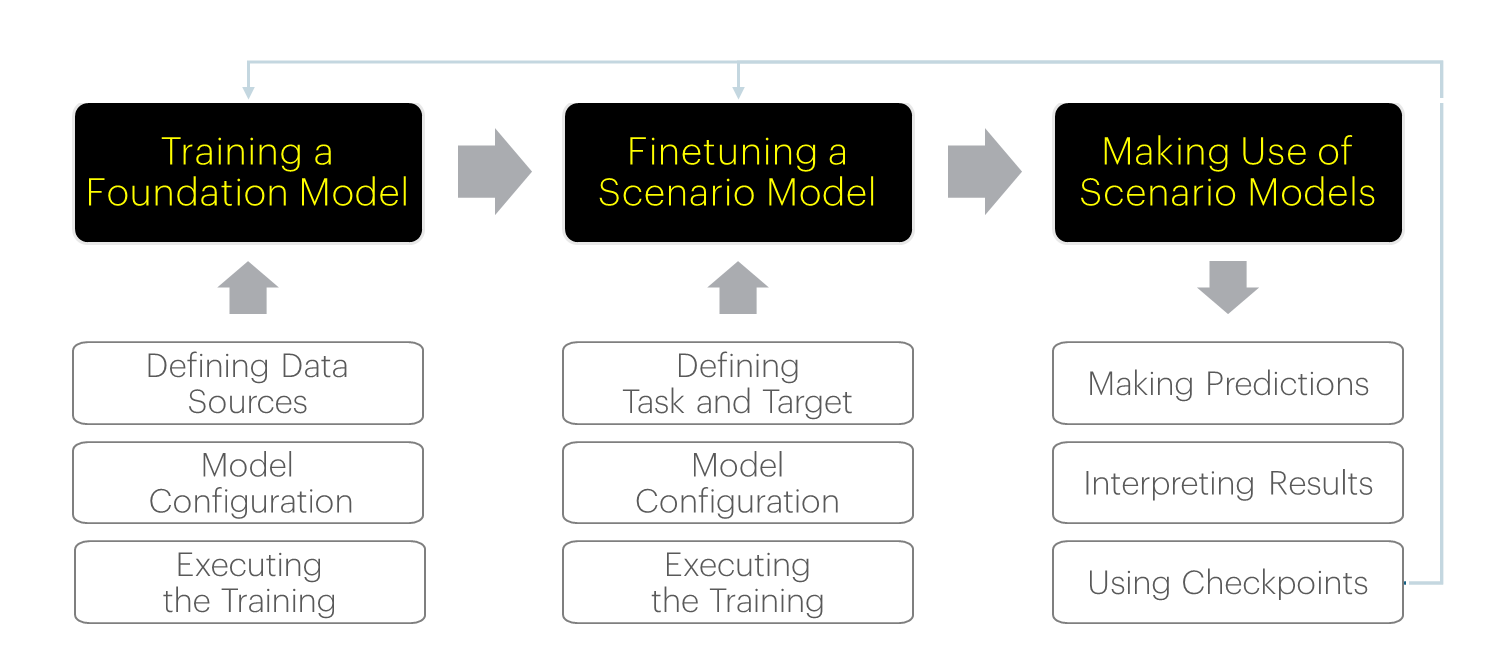Getting started
An overview of the user journey and ways of working
BaseModel Step by Step
There are three main stages when working with BaseModel:

-
Building Foundation Model: This stage involves the initial connection and configuration of your behavioral data, followed by training your private foundation model. You may also choose to modify model parameters at this stage.
-
Training scenario models: Here, you specify the target and parameters to train the model for specific business needs, such as recommendations, propensity, churn, and others.
-
Using your models: This stage includes making predictions and scoring entities, as well as interpreting the results. You can also use checkpoints to train further models.
Accessing BaseModel via native Snowflake application
The subsequent articles in this guide focus on utilizing BaseModel through a Docker container, which provides a unique user experience and workflow distinct from the native Snowflake application. The Docker container method necessitates the use of Python functions, offering greater flexibility but demanding more coding effort. Conversely, the native Snowflake application delivers a more cohesive and streamlined user experience, though it may not provide access to all the configuration options available to Docker container users. For comprehensive instructions on using the native Snowflake application, please consult the dedicated section of this guide: Snowflake Native Apps quick start - coming soon!.
Updated 5 days ago
